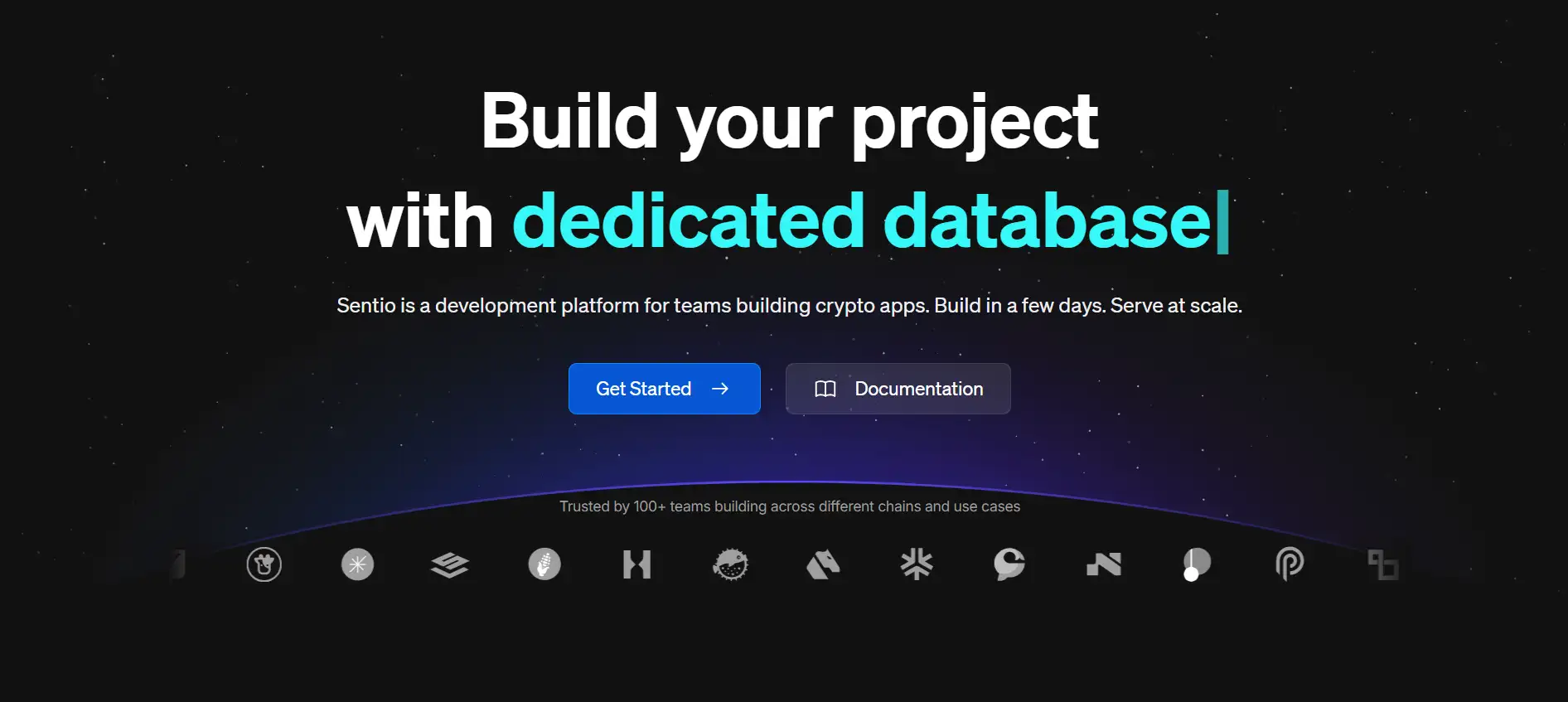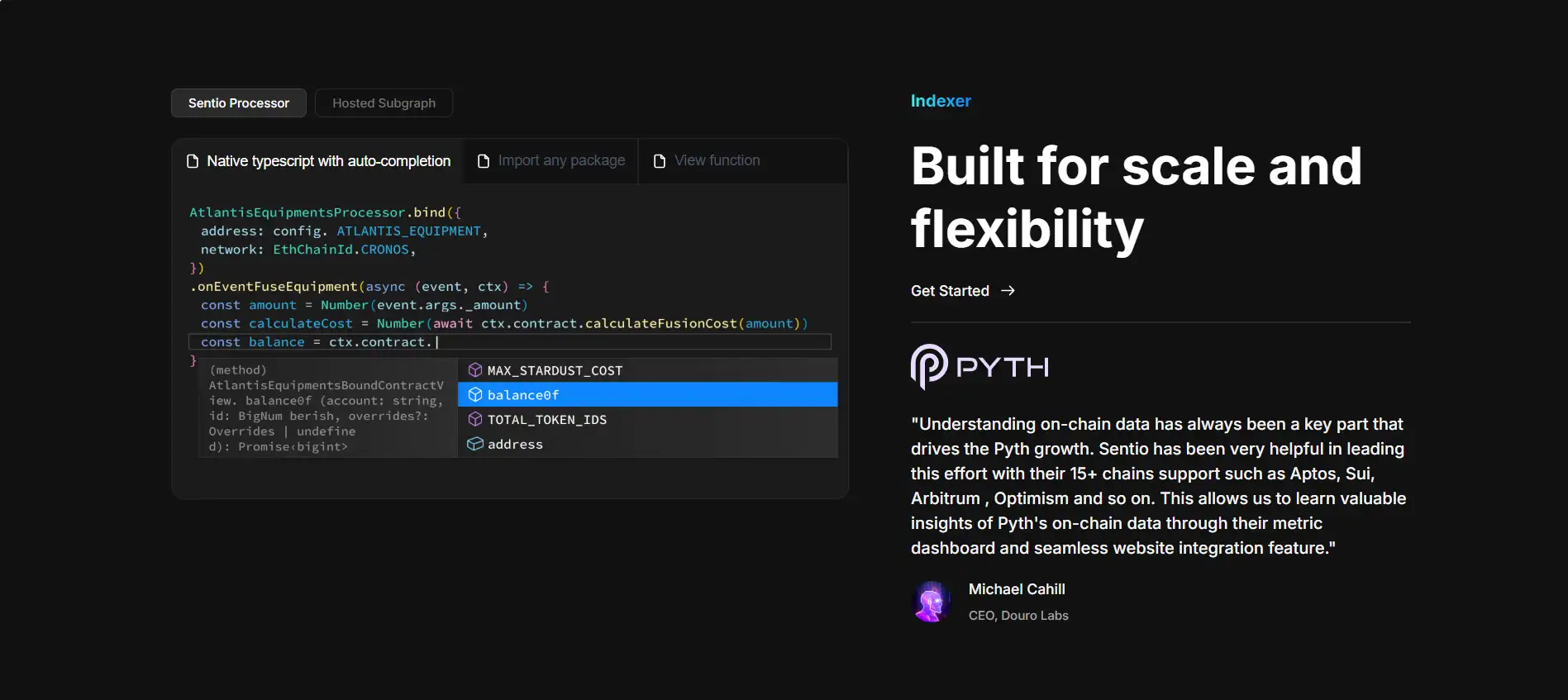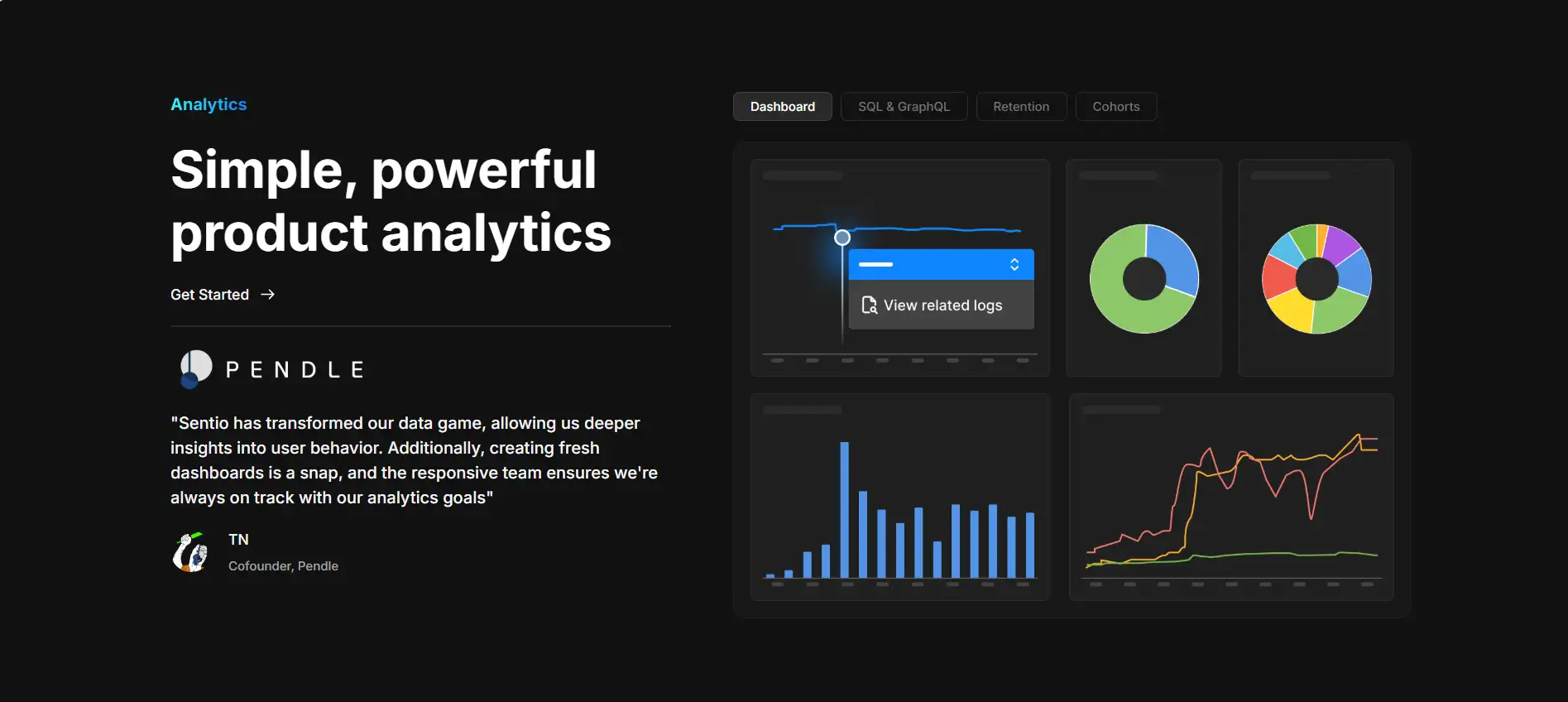About Sentio
Sentio is a full-stack blockchain development and data platform designed to empower crypto teams with real-time data indexing, analytics, debugging, and monitoring capabilities. With an intuitive interface and powerful SDKs, Sentio helps developers build, test, and scale blockchain applications faster than ever across EVM and non-EVM ecosystems. It’s trusted by top-tier projects like Pendle, Pyth, Polygon, Sui, PancakeSwap, and many more.
Sentio supports over 15 blockchain networks and is specifically designed to serve the growing needs of teams building in DeFi, gaming, wallets, and infrastructure. From its real-time Indexer and low-latency Debugger, to Simulators and dynamic Analytics dashboards, Sentio delivers the speed and flexibility required to launch and maintain performant Web3 apps.
Sentio is more than a data indexer—it’s a comprehensive development stack tailored for high-performance blockchain applications. Built from the ground up with developers in mind, Sentio abstracts away the complexity of building and scaling analytics systems, replacing months of infrastructure work with a single SDK. Its ecosystem supports multi-chain indexing, real-time metrics tracking, event logging, transaction simulations, and contract debugging from a unified platform.
At the heart of Sentio is its Processor framework, which enables developers to write custom TypeScript logic to process blockchain events. Developers can generate typed ABIs automatically, define metrics with a few lines of code, and deploy indexers that run at scale. Whether you're tracking fund flows in a DeFi protocol or monitoring NFT activity in a gaming dApp, Sentio's architecture enables high concurrency and low latency data processing using the battle-tested ClickHouse database.
Key features include dynamic logs, simulation tooling, real-time alerting, and a SQL + GraphQL analytics dashboard. Developers can simulate transactions, inspect execution paths, and trace gas usage across multi-step smart contract interactions. The platform also includes a universal code search that helps teams inspect on-chain deployed contracts, find related transactions, and navigate references directly.
Sentio is already powering over $24B in Total Value Served (TVS), with 6 billion+ events processed and 3,000+ developers onboarded. It’s used by leading teams like Renzo, Zircuit, Fuel, Beefy, and Mellow to manage mission-critical infrastructure across networks like Aptos, Sui, Arbitrum, Optimism, and Polygon zkEVM.
While Sentio shares some surface similarities with tools like The Graph or Dune, it offers more flexible control over indexing logic, native TypeScript development, dynamic simulations, and real-time monitoring, making it a more complete solution for production-grade crypto apps.
Sentio provides powerful benefits and features for developers and teams building in the Web3 space:
- Custom Indexer Framework: Build blazing-fast indexers in TypeScript using Sentio’s SDK with automatic ABI typing and multi-chain support.
- Transaction Debugging: Visualize transaction flows, inspect gas profiles, trace function calls, and simulate complex transactions with precision.
- Dynamic Logging: Add console logs inside smart contracts for real-time visibility during on-chain execution.
- Analytics & Dashboards: Built-in GraphQL and SQL tools let you create live dashboards and monitor KPIs with zero setup.
- Event-Driven Architecture: Process blockchain events across chains in parallel, enabling 100x faster indexing vs traditional tools.
- DeFi & GameFi Integration: Includes templates and integration samples for over 70+ DeFi protocols, with chain-agnostic support.
- Code Intelligence: Search on-chain contracts, find references, and map out related transactions for faster iteration and debugging.
- Fully Managed Infrastructure: Serverless and scalable architecture so teams can focus on products—not infra setup.
Sentio offers a developer-first workflow that makes it easy to start building with blockchain data and analytics. Here’s how to get started:
- Create an account: Visit Sentio and sign up using your Google or GitHub account.
-
Install the CLI: Use
npx @sentio/cli@latestto access Sentio’s command-line tools. -
Start a new project: Run
npx @sentio/cli@latest create your-projectto generate a TypeScript-based processor structure. - Write custom logic: Use the Sentio SDK to define metrics, bind event handlers, and emit logs. You can import ABIs or use built-in templates.
-
Deploy the processor: Build and upload your code using
yarn sentio buildandyarn sentio upload. The project will be available in your Sentio dashboard. - Monitor & visualize: Head to the Sentio App to explore logs, metrics, and real-time data.
- Try a tutorial: Follow step-by-step guides like the ERC20 Processor tutorial to track token transfers and volume using live on-chain events.
- Join the community: For help or feedback, connect on Discord or check the official documentation.
Sentio FAQ
Sentio accelerates crypto product development by combining a TypeScript-based indexing framework with real-time analytics, simulations, and debugging—all from a single interface. Developers can go from idea to production in hours, not weeks. With built-in GraphQL/SQL dashboards and auto-generated ABIs, Sentio handles the heavy lifting so your team can focus on building great products instead of setting up infrastructure.
While platforms like The Graph and Dune specialize in querying and visualizing blockchain data, Sentio offers a full development platform with custom indexers, real-time simulators, code search, and contract-level debugging. Developers have full control over event logic, and can write advanced processors using native TypeScript—unlocking use cases that go far beyond passive data queries.
Yes! Sentio offers a powerful transaction simulation engine that lets you test how smart contracts will behave in production—without deploying them. You can simulate multi-step transactions, inspect fund flows, and view gas profiling in real time. The Sentio Simulator is designed to help you catch bugs, optimize logic, and debug deeply nested DeFi workflows before they hit mainnet.
Sentio supports multi-chain indexing by allowing developers to bind multiple contracts across different chains in the same project. Whether you're working on EVM, Aptos, Sui, or Fuel, Sentio’s SDK can track events and emit metrics across all environments. Teams can deploy processors for multiple networks simultaneously and access unified metrics via dashboards or custom APIs. Learn more in the Sentio documentation.
Absolutely. Sentio is optimized for high-QPS workloads and real-time data handling. With its ClickHouse-powered backend and modular processor architecture, it’s built to handle billions of events and serve insights instantly. Trading bots, MEV strategies, and high-frequency DeFi apps benefit from low-latency indexing, live balance tracking, and simulation tools. Projects like Pendle, Renzo, and Polygon zkEVM already rely on Sentio for performance-critical infrastructure.
You Might Also Like












